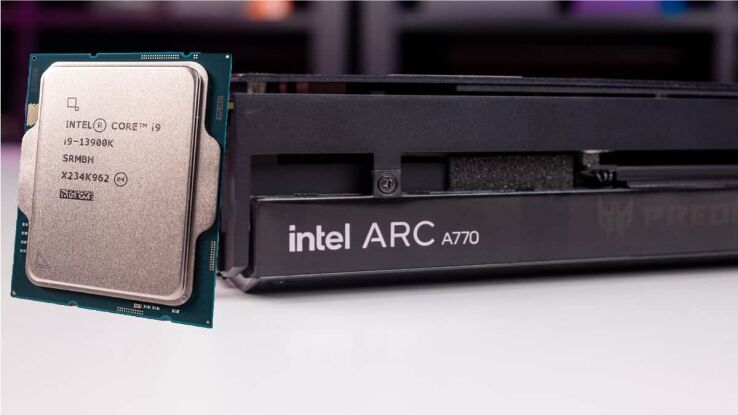Intel hardware gets hit by a wave of vulnerabilities and performance degradation
Both Intel CPUs and GPUs have some vulnerabilties to be wary of

WePC is reader-supported. When you buy through links on our site, we may earn an affiliate commission. Prices subject to change. Learn more
Both Intel and AMD have had some vulnerabilities arise for their processors. That has also come to Intel’s graphics resurgence as well. This has already led to a loss in performance on its CPUs and might make the GPUs even less appealing with the lower uptake of the cards.
It was recently found that Intel and AMD suffered from Downfall and Inception respectively that bring with the security and performance impacts of many PCs. Then just a couple of days after the processors got hit, Intel’s Arc series found some problems with a specific batch of cards that can give you a denial of service but let’s have a look at what these mean in reality.
Intel Downfall vulnerability
Also named Gather Data Sampling (GDS) it was given a medium severity rating by Intel itself. The impact of this isn’t too severe in fact as it is confined to particular workloads and not a general application. This GDS affects processors with AVX2 and AVX-512 instructions. This means the last gen is not affected and rather Tiger and Ice Lake lineups are the ones that are vulnerable.
These instruction sets are part of the x86 architecture and enhance the single instruction, multiple data (SIMD) capabilities. Particularly useful for heavy computational workloads like simulations and development. What you get from Downfall is the leak of internal contents that could lead to data theft.
Intel has already released a microcode to fix this vulnerability, however, it leads to a significant performance drop due to it. It has been benchmarked and found to reduce the performance between 6-39% in a range of workload software including OSPRay 1.2, OpenVKL, etc. These are more enterprise utilities and affected mostly the Xeon platform. Still, it is possible to disable the close although leaving you open to the vulnerability still.
Intel ARCs two vulnerabilities
In a more limited capacity, two of Intel Arcs GPUs have also been affected by their own set of problems. The Intel Arc A770 and A750 are the top two cards of the range and the ones affected, but only those that were bought between October and December 2022, which is a likely lower number than the CPU problem.
The first of which is the memorable CVE-222-4198, which allows a user with the right privileges to enable Denial of Service (DoS) through local access. That can lead to disruption of the GPU performance and with a 4.4 medium severity assigned it’s quite a significant threat even if it requires close access.
The other one is CVE-2022-38973 which can lead to information leakage via improper access control. Only with a 3.3 Low score, it is part of the less effective with limited sample size. But if you are one of the ones affected you can get help from your local Intel support since as of yet there is no immediate fix for the vulnerabilities.